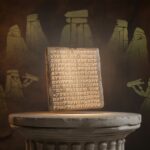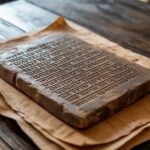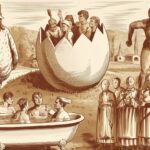How a Vague Noise Ordinance Led to an Unintended Ban
The town of Elmore City, Oklahoma didn’t set out to outlaw dancing—it just wanted to keep the peace. Back in 1898, the town passed what was essentially a noise ordinance, intended to curb rowdy gatherings and alcohol-fueled brawling in the community. But here’s the twist: the ordinance was so vaguely worded that it left a lot of room for interpretation. And interpret it they did. Over time, town leaders began to treat music, dancing, and public celebrations not just as noisy distractions, but as moral threats. By the mid-20th century, the ordinance had morphed—unofficially but effectively—into a full-blown prohibition on dancing itself.

The law never explicitly outlawed dancing, but its enforcement told a different story. Local authorities, particularly those influenced by conservative religious values, cited the ordinance to shut down any event that involved dancing. A local minister even described dancing as “a tool of the Devil,” linking it to “satanic worship” and moral decay, according to reporting by the Daily Mail. This interpretation went largely unchallenged for decades, becoming an accepted norm despite its shaky legal foundation. In fact, it wasn’t until 1980—over 80 years later—that the law’s ambiguity was seriously questioned. When high school students tried to organize a prom, the town realized it had no legal basis to deny them—just a tradition of misinterpreting a century-old rule.
And Elmore City wasn’t alone. Similar cases popped up in places like Henryetta, Oklahoma, where a 1979 ordinance banning dancing within 500 feet of a church resurfaced in 2017 and forced the cancellation of a Valentine’s event—even though the law had never been enforced before. These examples show how vague laws, left to simmer in the background, can unexpectedly shape a town’s culture for generations. In Elmore City’s case, it took a group of teenagers—and a tie-breaking school board vote—to finally call the bluff on a rule that was never meant to be a ban in the first place.
The Surprising Real-Life Inspiration Behind Footloose
You might know Footloose as the quintessential 1980s rebellion flick—Kevin Bacon dancing his way through small-town oppression, set to a killer soundtrack. But beneath the Hollywood gloss lies a far more surprising truth: the film was inspired by the very real story of Elmore City, Oklahoma, a town that actually outlawed dancing for 82 years. Yes, from 1898 until 1980, it was illegal to dance in Elmore City. Why? Because local leaders believed it led to drinking, misbehavior, and—according to at least one minister—satanic influence. The law wasn’t just a cultural quirk; it was a deeply entrenched moral stance that shaped generations.
The turning point came when a group of high school juniors wanted to hold a prom. That seemingly simple request ignited a local firestorm. Led by students Mary Ann Temple-Lee and Leonard Coffee, the class lobbied the school board to overturn the ban. The board tied in their vote—until President Raymond Temple cast the deciding one in favor of dancing. That prom in 1980 became the first legal dance in Elmore City in nearly a century.
Word of the story reached screenwriter Dean Pitchford, who traveled to the town, interviewed residents, and used their accounts as the foundation for Footloose—originally titled “Cheek to Cheek”. The film was shot in Provo, Utah, with a modest $8 million budget—and grossed over $80 million, cementing its place in pop culture. Today, Elmore City embraces its cinematic legacy with an annual “Footloose Festival,” a celebration of the moment its teens danced their way into history.
Local Businesses Targeted for Hosting Dance Events
For decades, local businesses in Elmore City, Oklahoma, operated under a silent—but stifling—constraint: they couldn’t legally host a dance. From 1898 to 1980, the town’s sweeping anti-dancing ordinance didn’t just affect teenagers longing for prom; it subtly but powerfully suppressed the economic and cultural life of the community. Restaurants, event halls, and even church basements that might have doubled as venues for social gatherings were effectively barred from hosting anything that involved dancing. The logic, as framed by early town leaders and reinforced by conservative clergy, was that dancing led to drinking, and drinking led to moral decay. As a result, business owners learned to avoid the topic altogether—better to host a quiet potluck than risk being condemned for promoting “satanic” behavior, as one local minister put it.

This wasn’t an isolated case. In Henryetta, Oklahoma, a 1979 ordinance prohibiting dancing within 500 feet of a church was suddenly resurrected in 2017, forcing venue owner Joni Insabella to cancel a planned Valentine’s Day dance—even though the church didn’t object. The law, originally passed to curb the influence of a rowdy bar decades earlier, had sat dormant until it was invoked by a local resident with a personal axe to grind. The result? A night of music, food, and local business revenue—gone. The economic impact rippled outward: caterers, decorators, DJs, and even clothing shops catering to dancegoers lost out on a rare business opportunity.
Even in Fort Smith, Arkansas, a 1953 ban on Sunday dancing—only repealed in 2018—had long limited weekend earnings for entertainment venues. Though rarely enforced, the ordinance discouraged businesses from hosting weekend dance events, especially those tied to weddings or community fundraisers. The cost wasn’t just financial. These outdated laws signaled to entrepreneurs that innovation and culture might clash with local codes—an unwelcoming message in towns trying to retain young talent and tourism dollars.
In a broader context, similar ordinances like Seattle’s Teen Dance Ordinance of 1985 show how dance bans often disproportionately burdened small businesses. The law required venues to secure $1 million in liability insurance and hire two off-duty police officers for every event—an expense too steep for most promoters, especially those hoping to host all-ages shows. The cumulative effect of such rules was to stifle local culture under the guise of public decency and safety.
So while the legal texts may have targeted “dancing,” the real casualties were often small businesses, community cohesion, and the simple human desire to move to music.
Community Outrage and the Rise of “Dance Inspections”
When a town bars dancing for over eight decades, it’s only a matter of time before the tension starts to show—and in Elmore City, Oklahoma, that tension erupted in ways few outsiders could have predicted. The ban, in place since 1898, wasn’t just about keeping kids off the dance floor; it was rooted in deep-seated fears about morality, misbehavior, and even “satanic” influence, as voiced by local clergy. But by the late 1970s, the town found itself in a bizarre tug-of-war between tradition and youth culture, and the result was a kind of enforcement that bordered on the theatrical: so-called “dance inspections.”
These inspections weren’t codified in law, but they became an informal tool of social control. Local officials—sometimes spurred by anonymous tips—would show up unannounced at school events, private parties, or even local businesses, checking for signs of illicit footwork and monitoring music volume. The mere suspicion of rhythmic movement was enough to get an event shut down. Business owners, already wary of offending the town’s more conservative voices, often canceled gatherings under pressure, fearing legal ramifications or community backlash.
Naturally, this heavy-handed enforcement stirred deep resentment, especially among the younger generation. Many teenagers saw these inspections not as moral safeguards, but as infringements on basic freedoms. As one former student recalled in a 2010 retrospective, “It wasn’t about dancing—it was about being told we couldn’t express ourselves.” And that sentiment only intensified when the Elmore City school board initially refused to allow a prom, citing the longstanding ordinance. The crackdown sparked not just frustration, but a movement—one that would soon inspire national headlines and, eventually, Hollywood.
Oddly enough, Elmore City wasn’t alone. Similar enforcement patterns emerged in places like Henryetta, Oklahoma, where a 1979 ordinance banning dancing within 500 feet of a church led to the cancellation of a Valentine’s event in 2017—despite the church itself raising no objections. In these towns, the legacy of moral legislation lingered long after its cultural relevance had faded, leaving communities grappling with outdated rules and the awkward work of modern reinterpretation.
So what started as a quaint, if peculiar, policy to curb “drunken revelry” evolved into a flashpoint of civil resistance. And as the inspections grew more absurd, the calls for change grew louder. The stage, both literal and metaphorical, was set for a dramatic teenage rebellion—one that would turn a forgotten Oklahoma ordinance into a pop culture legend.
Legal Loopholes That Made Dancing Technically a Crime
At first glance, it might seem absurd to imagine dancing as an illegal act in modern America—but in towns like Elmore City, Oklahoma, and Henryetta, legal language made it just that. The roots of Elmore City’s 82-year dance ban, which began in 1898, weren’t just cultural—they were codified. The original ordinance was created to prevent alcohol-fueled misbehavior, but its wording was vague enough to blanket dancing entirely under suspicion. There wasn’t a clear definition of what constituted a “dance,” nor any legal distinction between social gatherings and “immoral conduct.” That lack of specificity gave local authorities broad discretion to deny events, especially those involving teenagers.

A similar situation unfolded in Henryetta, Oklahoma, where a 1979 ordinance outlawed dancing within 500 feet of a church. Although rarely enforced, it was still legally binding—and in 2017, it was used to cancel a Valentine’s Day dance because the venue was just 300 feet from a local church, despite the church raising no objections. The ordinance was originally passed to address problems with a rowdy dance bar, but its blanket application created what locals now refer to as a “de facto dance ban.”
These laws often relied on moralistic or religious language—phrases like “good moral character” or “public welfare” that allowed for subjective enforcement. In Fort Smith, Arkansas, for instance, a 1953 law banned dancing on Sundays, citing concerns for “public health, safety, and welfare”. No one had been arrested under the law for decades, yet it remained on the books until 2018. These so-called “blue laws,” often relics of a more puritanical era, created legal minefields that made even innocent waltzes potentially criminal acts.
In the case of Pound, Virginia, the legal gray area was exploited even further. A dance permit ordinance denied access to anyone not deemed a “proper person” or lacking “good moral character”—terms so nebulous they allowed for near-total gatekeeping of public expression. Although a court initially ruled the law unconstitutional, it was later reinstated due to procedural technicalities.
Together, these examples reveal a sobering truth: sometimes, it isn’t the law’s intent but its ambiguity that does the most damage. When statutes are left open to interpretation, especially in small towns where social norms carry legal weight, dancing can become not just discouraged—but criminal.
The Teen Rebellion That Fought to Bring Dancing Back
In the spring of 1980, teenage defiance in a quiet Oklahoma town did more than challenge curfew—it rewrote history. Elmore City, population just under 700 at the time, had enforced a strict no-dancing ordinance since 1898, a rule originally passed to curb alcohol-related misbehavior and what some townspeople feared were the devil’s footwork—literal “satanic” influences tied to dancing. But after 82 years of still feet, it was a group of high school juniors who finally decided enough was enough.
The catalyst? A prom—or rather, the lack of one. Students like Mary Ann Temple-Lee and Leonard Coffee, members of the junior class tasked with organizing the annual banquet, pushed back against the outdated statute. They didn’t just want corsages and punch bowls; they wanted music, movement, and the same rite of passage other American teens enjoyed. Their campaign stirred a cultural reckoning. Some locals, especially conservative clergy, denounced the initiative, warning that dancing would open the floodgates to moral decay.
Despite the backlash, the students persisted, rallying community support and presenting their case to the school board. The vote came down to a dramatic tie—broken by board president Raymond Temple, Mary Ann’s own father, who cast the deciding vote in favor of the prom. That spring, Elmore City hosted its first dance in nearly a century. The rebellious teens didn’t just win a night to remember; they sparked a national conversation and inspired Dean Pitchford’s screenplay for the 1984 blockbuster Footloose. Today, the town honors their courage with the annual Footloose Festival, a celebration of the moment when a group of teenagers stood up, stepped out—and danced.
How the Town Eventually Rewrote Its Laws (with a Few Twists)
Elmore City, Oklahoma, may not have intended to become a cultural flashpoint—but by 1980, it found itself at the center of a legal and generational reckoning. The town’s ban on public dancing, which had been on the books since 1898, was originally passed to curb what local leaders saw as the twin evils of alcohol-fueled rowdiness and “satanic” behavior. For 82 years, the ordinance quietly shaped community life, particularly for teenagers who faced the annual indignity of a dance-free banquet in place of a prom. That all changed when a group of determined high school juniors decided to challenge the status quo.The push to change the law wasn’t just about the right to dance—it was about autonomy, identity, and the right of young people to define their own traditions. Students Mary Ann Temple-Lee and Leonard Coffee emerged as key organizers of the movement, and their campaign culminated in a dramatic showdown before the school board. The vote was deadlocked until Raymond Temple—Mary Ann’s father—cast the deciding ballot in favor of allowing a prom. Just like that, a century-old law fell, not with a bang, but with a tie-breaker.
But the story didn’t end at the prom. In the years that followed, Elmore City embraced its unexpected fame, becoming the real-life inspiration for the 1984 film Footloose, written by Dean Pitchford after he visited the town and interviewed the students involved. The town now hosts an annual Footloose Festival, and in 2010, it celebrated the 30th anniversary of its first legal prom—an event once seen as controversial, now commemorated as a cultural milestone. Interestingly, similar laws elsewhere also faced scrutiny. In Henryetta, Oklahoma, a 1979 ordinance banning dancing within 500 feet of a church was invoked as recently as 2017, while Fort Smith, Arkansas, finally repealed its 1953 Sunday dancing ban in 2018. In each case, the echo of Elmore City’s rebellion reminded small towns across America that even the quietest ordinances can stir the loudest debates.







